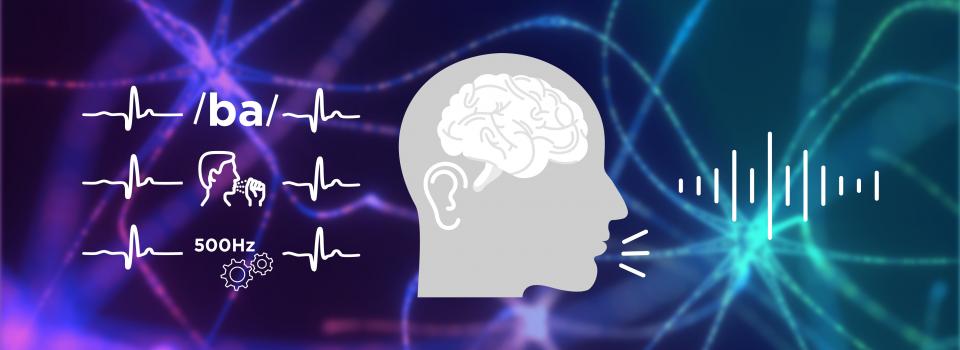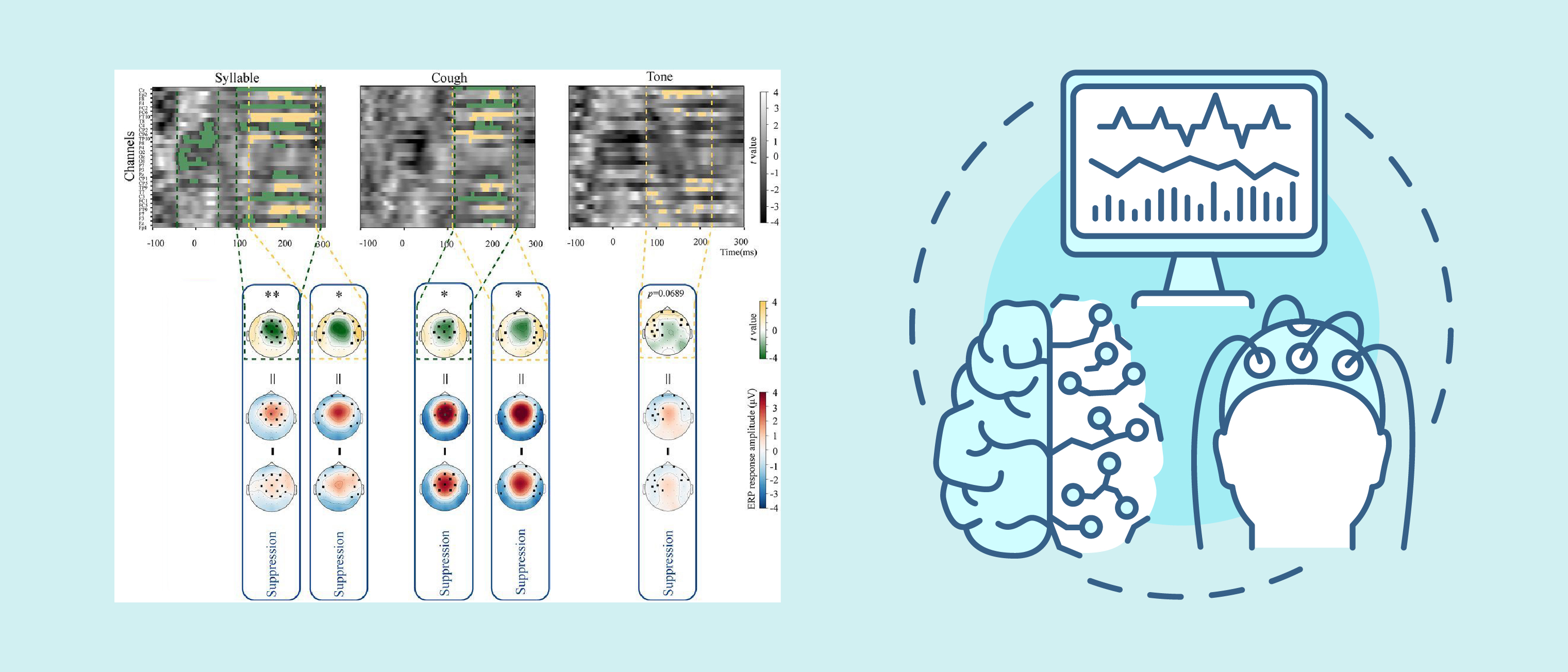Mar 02 2023
Published by
NYU Shanghai

When standing on a moving walkway or walking on the ground, the end result is the same - your body moves forward. But we can distinguish between self-generated and externally generated movements. The important sense of controlling one's own body and differentiating it from the environment is called agency. A neural signal termed corollary discharge (CD) is believed to yield the sensory of agency – CD allows the brain to predict the sensory feedback of the movement and creates a sense of agency when the predicted and actual feedback match, enabling us to have a better understanding of our physical interactions with the world.
Neuroscientists have been exploring the function of CD for over 150 years, but how CD generates the sense of agency throughout the entire duration of action remains unclear. The Speech, Language and Neuroscience Group (SLANG), a joint research team under the NYU-ECNU Institute of Brain and Cognitive Science at NYU Shanghai co-led by Associate Professor of Neural and Cognitive Sciences Tian Xing, has long focused on studying higher-order cognitive functions such as motor-to-sensory transformation. In a recent study published in eNeuro, a team of researchers led by Tian, investigated the generic function of CD at the very beginning of the motor process, advancing our understanding of this neural mechanism and adding an important piece to the puzzle.
The process of making a movement involves several phases, including intention, encoding, and execution. “During the initial intention phase, we formulate the idea to move, without a specific plan of how to move,” said Tian. “The encoding phase involves planning and preparation for the movement by transporting neural signals from the brain to the body. Finally, in the execution phase, we physically carry out the movement,” he said.
While previous studies believed that CD only functions until the encoding phase begins, Tian's group, based on theoretical deduction and previous observations in the lab, boldly hypothesized that CD starts to function even as early as during the intention phase. To test this hypothesis, they designed a novel delayed articulation paradigm, where participants were instructed to prepare to speak without knowing what to say, precisely controlling their movements in the intention phase.
Brain activities captured with EEG while listening to different stimulus sounds (syllables, coughs, and tones).
The researchers recorded participants’ brain activities using the electroencephalography (EEG) technique and found that CD is indeed functioning during the intention phase, as neural responses to all sounds that humans can produce were significantly suppressed even when people didn’t know what action to carry out.
“The study provided the first empirical evidence that CD is functioning during the action intention phase, significantly pushing the time limit of CD operation to the initiation of action and providing a complete picture of how the sense of agency emerges. These findings could potentially serve as a foundation to understand the brain functional deficits related to agency, such as hallucinations in schizophrenia, and hence guide the development of diagnosis and treatments for mental disorders,” Tian said.
Zheng Xiaodan, the first author of this paper, is a third-year master’s student majoring in Psychology at the NYU Shanghai - ECNU Joint Graduate Training Program (N.E.T.). The second author, Zhu Hao, is a fourth-year Neuroscience PhD student at NYU Shanghai, advised by Tian. “Xiaodan and Hao combined their strengths in experimental design and implementation and data processing for this work,” said Tian, “demonstrating the power of leveraging the joint resources of NYU Shanghai and ECNU to advance scientific research.”



